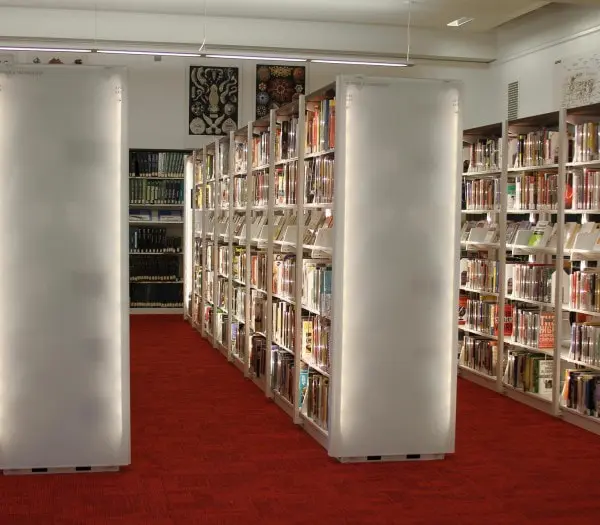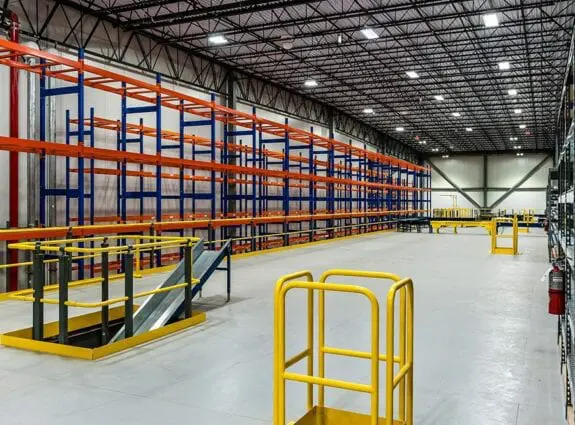
In today’s digital age, libraries continue to play a vital role in our communities. They serve as a treasure trove of knowledge, housing countless books and resources that educate and inspire. However, managing and preserving these valuable collections can be a challenging task. Library storage solutions are essential for safeguarding books, ensuring their longevity, and creating an organized space for easy access. In this blog, we will explore the importance of library storage, different types of storage solutions, book preservation strategies, and safety measures to enhance the well-being of library workers and visitors. Let’s dive in and learn how to keep your books safe with effective library storage solutions.
The Evolution of Library Spaces in the Digital Age
In the digital age, libraries have evolved from traditional repositories of books to dynamic spaces that cater to the changing needs of patrons. They have become more than just bookshelves, transforming into vibrant hubs that foster lifelong learning, collaboration, and community engagement. The design and functionality of library spaces have adapted to accommodate new technologies, multimedia tools, and the diverse interests of library visitors. Library spaces now play a pivotal role in creating engaging and inclusive environments for users of all ages and backgrounds.
From Traditional to Digital: A Shift in Library Functions
The shift from traditional to digital media has significantly impacted the functions of libraries. In the past, libraries primarily focused on physical book storage and retrieval. However, with the widespread adoption of digital media, libraries have expanded their offerings to include e-books, online databases, and other digital resources. This shift has not only changed the way library staff manage and organize their collections but has also influenced the skills and roles of library staff. In addition to being knowledgeable about physical book storage, library staff must now be proficient in managing digital collections, troubleshooting digital devices, and assisting patrons with accessing and navigating digital resources. By adapting to these changes and embracing new technologies, libraries can continue to provide valuable resources and services to their communities in the digital age.
How Technology is Shaping Modern Libraries
Technology plays a significant role in shaping modern libraries. Multimedia tools, such as interactive displays, virtual reality headsets, and audiovisual equipment, are becoming increasingly prevalent in library spaces. These tools enhance educational purposes by providing immersive learning experiences and facilitating access to a wide range of resources. For example, students can use virtual reality to explore historical landmarks, scientists can access digital databases for research purposes, and individuals with disabilities can utilize assistive technologies to access library resources. Technology also enables libraries to offer innovative programs and services, such as coding workshops, digital media labs, and online learning platforms. By integrating technology into their design, libraries can provide engaging and interactive spaces that meet the evolving needs of their patrons and promote lifelong learning.
Adaptive Storage Solutions for Future-Ready Libraries
Future-ready libraries require adaptive storage solutions to efficiently manage their collections. Traditional bookshelves may not provide the flexibility and scalability needed to accommodate changing collection sizes and formats. Adaptive storage solutions, such as dynamic shelving systems, offer customizable configurations that can be adjusted to fit different types of library collections. These storage systems optimize space utilization, protect valuable books, and ensure easy access for library staff and patrons. By implementing adaptive storage solutions, libraries can future-proof their storage infrastructure and provide a well-organized environment that supports their evolving collection needs.
Implementing Dynamic Shelving Systems
Dynamic shelving systems, such as mobile shelving and cantilever shelving, are popular options for future-ready libraries. These systems provide flexibility, space efficiency, and customizable configurations to meet the specific needs of library collections. Here are some key benefits and considerations for implementing dynamic shelving systems:
- Mobile shelving: This system consists of shelves mounted on movable carriages that can be compacted or expanded as needed. It maximizes storage capacity by eliminating wasted aisle space and provides easy access to books. Some considerations for mobile shelving implementation include:
- Utilizing high-density mobile shelving to optimize floor space.
- Considering the weight and size of books to ensure the shelves and carriages can support the collections.
- Incorporating safety features, such as anti-tip mechanisms and aisle locks, to protect library staff and patrons.
- Cantilever shelving: This system features shelves supported by brackets attached to a vertical upright. It offers versatility, as shelves can be easily adjusted or removed to accommodate different book sizes and formats. Considerations for cantilever shelving implementation include:
- Planning the shelving layout based on the available space and the types of books to be stored.
- Using sturdy and durable materials to support the weight of books and prevent sagging.
- Incorporating labeling systems to ensure easy identification and retrieval of books.
By implementing dynamic shelving systems, libraries can optimize their storage space, improve accessibility, and create a more efficient and organized environment for their collections.
The Role of Multifunctional Spaces in Libraries
Multifunctional spaces play an important role in modern libraries, particularly public libraries. These spaces are designed to accommodate a variety of activities and events, allowing libraries to serve as community hubs. Here are some key aspects of the role of multifunctional spaces in libraries:
- Collaboration and creativity: Multifunctional spaces provide opportunities for collaboration and creativity. They can be designed with flexible furniture, movable partitions, and multimedia tools to support group work, workshops, and presentations.
- Community engagement: Libraries are increasingly becoming spaces for community engagement, hosting events, and programs that cater to diverse interests and age groups. Multifunctional spaces allow libraries to host author talks, book clubs, art exhibitions, and other community events.
- Adaptability and flexibility: Multifunctional spaces need to be adaptable and flexible to accommodate different activities and events. They should be designed with modular furniture, flexible layouts, and movable walls or partitions to easily transform the space as needed.
By incorporating multifunctional spaces into library design, libraries can create versatile environments that cater to the evolving needs and interests of their communities.
Designing User-Centric Library Spaces
Designing user-centric library spaces is essential to ensure that libraries are accessible and inclusive for all patrons. User-centric design puts the needs and preferences of library users at the forefront, creating spaces that are welcoming, functional, and accommodating. By considering factors such as accessibility, layout, and user feedback, libraries can create environments that promote engagement, learning, and comfort for all patrons.
Prioritizing Accessibility in Library Layouts
Accessibility is a key consideration in library design. Libraries should strive to create layouts that are easy to navigate for patrons with disabilities and mobility limitations. Here are some ways libraries can prioritize accessibility in their layouts:
- Clear pathways: Libraries should ensure that aisles and pathways are wide enough for wheelchair access and provide clear signage to guide patrons.
- Adjustable furniture: Providing adjustable tables, chairs, and computer stations can accommodate patrons with varying physical needs.
- Assistive technology: Libraries should offer assistive technologies, such as screen readers or magnification devices, to support patrons with visual impairments.
- Accessible collections: Libraries can ensure that books and resources are accessible to all patrons by offering large print materials, audiobooks, e-books, and other accessible formats.
Librarians play a crucial role in ensuring accessibility in library layouts. They can offer support and assistance to patrons with disabilities, as well as provide training and guidance to staff on accessibility best practices.
Integrating User Feedback into Space Planning
Integrating user feedback into space planning is essential for designing user-centric library spaces. By actively seeking and incorporating feedback from library users, libraries can better understand their needs, preferences, and challenges. Here are some ways libraries can integrate user feedback into space planning:
- Surveys and focus groups: Libraries can conduct surveys and host focus groups to gather feedback from patrons. Questions can focus on aspects such as layout, furniture, lighting, noise levels, and overall comfort.
- Observation and user testing: Libraries can observe how patrons interact with the space and conduct user testing to identify areas for improvement.
- Collaboration with library users: Libraries can involve patrons in the design process by inviting them to participate in design workshops or advisory committees.
By involving library users in the space planning process, libraries can create spaces that are tailored to their specific needs and preferences, ultimately enhancing the overall user experience.
Smart Library Infrastructure for Enhanced User Experience
Smart library infrastructure refers to the integration of technology and innovative solutions to enhance the user experience in libraries. By leveraging cutting-edge technologies and optimizing the library’s physical infrastructure, libraries can provide a seamless and personalized experience for their users. Smart library infrastructure encompasses various aspects, including digital services, automation, data analytics, and efficient resource management. By investing in smart library infrastructure, libraries can stay ahead of the curve and continue to provide valuable services and resources to their communities.
Cutting-edge Technologies in Library Services
Cutting-edge technologies are revolutionizing library services, enhancing accessibility, and expanding the possibilities for learning and engagement. Here are some examples of cutting-edge technologies that are transforming library services:
- Self-checkout systems: Self-checkout kiosks allow patrons to borrow and return books independently, reducing wait times and improving efficiency.
- Virtual reality and augmented reality: Libraries are incorporating virtual reality and augmented reality technologies for immersive learning experiences, virtual tours, and interactive storytelling.
- Artificial intelligence and chatbots: Libraries are implementing AI-powered chatbots to provide instant assistance and answer common questions from patrons.
- Data analytics and predictive modeling: Libraries are utilizing data analytics to gain insights into patron behavior, optimize resource allocation, and enhance user experiences.
The American Library Association (ALA) recognizes the importance of embracing cutting-edge technologies in library services. By staying abreast of the latest technological advancements, libraries can continue to evolve and provide innovative services that meet the changing needs of their communities.
The Impact of Smart Design on Library Usage
Smart design in libraries has a significant impact on usage and user experiences. By incorporating elements of smart design, libraries can create spaces that promote engagement, foster lifelong learning, and enhance the overall user experience. Here are some ways in which smart design can impact library usage:
- Accessibility: Smart design ensures that library spaces are accessible to all users, regardless of age, abilities, or preferences.
- Flexibility: Smart design allows for flexible and adaptable spaces that can accommodate various activities, events, and technologies.
- Technology integration: Smart design incorporates technology seamlessly into library spaces, enhancing access to digital resources and facilitating interactive experiences.
- Comfort and well-being: Smart design prioritizes user comfort and well-being, creating spaces that are inviting, comfortable, and conducive to learning and collaboration.
By embracing smart design principles, libraries can create environments that attract and engage users, promoting a sense of community and supporting lifelong learning.
Digital Archives and Management
Digital archives and management are becoming increasingly essential for libraries in the digital age. As libraries transition from physical collections to digital resources, the need for effective digital archives and management systems is paramount. Digital archives allow libraries to store, organize, and preserve digital materials such as e-books, digital photographs, audio recordings, and videos. Effective digital management systems facilitate easy access, retrieval, and preservation of digital assets, ensuring their long-term availability and usability.
Best Practices in Digital Archiving
Digital archiving involves the preservation and management of digital materials, such as manuscripts, photographs, and audiovisual recordings. Here are some best practices in digital archiving:
- File formats: Choosing appropriate file formats that are widely supported and have long-term compatibility.
- Metadata and indexing: Creating comprehensive metadata and indexing systems to ensure efficient retrieval and organization of digital assets.
- Backup and redundancy: Implementing backup systems and redundancy measures to protect against data loss or corruption.
- Digital preservation standards: Following established digital preservation standards, such as the Open Archival Information System (OAIS) reference model.
- Long-term planning: Developing long-term preservation strategies and regularly reviewing and refreshing digital assets to ensure their accessibility and usability.
By following best practices in digital archiving, libraries can effectively preserve and manage their digital collections, ensuring their long-term availability for future generations.
Managing Digital Collections and Accessibility
Managing digital collections involves ensuring the accessibility and usability of digital resources for library patrons. Here are some considerations for managing digital collections and promoting accessibility:
- Digital formats: Choosing accessible file formats that support assistive technologies, such as screen readers or magnification tools.
- Captioning and transcripts: Providing captions or transcripts for audiovisual resources to ensure accessibility for patrons with hearing disabilities.
- Alt text and descriptions: Including alternative text and descriptions for images and visual content, allowing patrons with visual impairments to understand the content.
- Accessible platforms: Selecting digital platforms and systems that meet accessibility standards and guidelines, such as the Web Content Accessibility Guidelines (WCAG).
- User testing and feedback: Involving patrons with disabilities in user testing and soliciting their feedback to identify and address accessibility barriers.
By managing digital collections with accessibility in mind, libraries can ensure that all patrons can access and benefit from the resources they provide.
The Future of Library Storage: Beyond Physical Books
The future of library storage goes beyond physical books, as libraries embrace digital platforms and new formats such as e-books. While physical books will always have a place in libraries, the rise of digital resources presents new opportunities and challenges for library storage. Libraries need to strike a balance between physical and digital collections, making both accessible and finding innovative storage solutions to preserve and manage these diverse resources.
Embracing Digital Platforms for Storage and Access
Embracing digital platforms for storage and access is essential for libraries in the digital age. Digital platforms provide a convenient and accessible way to store and manage books, especially e-books and digital collections. Here are some benefits of embracing digital platforms for storage and access:
- Increased accessibility: Digital platforms allow patrons to access books and resources remotely, expanding the reach of library collections.
- Efficient storage: Digital platforms eliminate the need for physical storage space, making it easier for libraries to manage and organize their collections.
- Preservation of special collections: Digital platforms provide an opportunity to digitize and preserve special collections, ensuring their long-term accessibility and preventing deterioration.
- Enhanced search and retrieval: Digital platforms offer advanced search and retrieval capabilities, allowing patrons to quickly find and access the information they need.
By embracing digital platforms for storage and access, libraries can provide a seamless and inclusive experience for patrons, expand their reach, and preserve valuable collections.
Balancing Physical and Digital Collections
Balancing physical and digital collections is crucial for libraries to meet the diverse needs of their patrons. While digital collections offer accessibility and convenience, physical collections, such as print books and research materials, continue to hold value for many library users. Here are some considerations for balancing physical and digital collections:
- Collection development: Libraries should assess the needs and preferences of their patrons to determine the appropriate mix of physical and digital resources.
- Storage solutions: Libraries should invest in storage solutions that can accommodate both physical and digital collections, ensuring easy access and effective management.
- Access and licensing: Libraries should navigate the complexities of digital licensing and copyright to provide seamless access to digital resources while respecting intellectual property rights.
By striking a balance between physical and digital collections, libraries can cater to a wide range of user preferences and ensure that valuable research materials are preserved and accessible.
Frequently Asked Questions
Innovative storage solutions for libraries include mobile shelving, which maximizes storage capacity by eliminating wasted aisle space, and cold storage for preserving delicate materials such as film reels or historical documents.
Libraries can stay relevant in the digital age by embracing technology, offering digital resources, and providing lifelong learning opportunities. Librarians play a crucial role in curating collections, assisting patrons with digital literacy, and promoting information literacy skills.
Creating collaborative spaces in libraries can be achieved through flexible furniture arrangements, movable partitions, and the incorporation of accessories such as whiteboards, multimedia tools, and comfortable seating.
Sustainable practices in library design include selecting eco-friendly materials, implementing energy-efficient lighting and HVAC systems, and designing durable furniture and shelving solutions to reduce waste and promote longevity.
Technology can be integrated into modern library design through the incorporation of multimedia tools, interactive displays, digital catalog systems, and self-checkout kiosks to enhance user experiences and facilitate access to resources.
Library design can promote inclusivity and accessibility by incorporating features such as wide and well-lit pathways, adjustable furniture, assistive technologies, and signage that caters to patrons with diverse needs and abilities.




